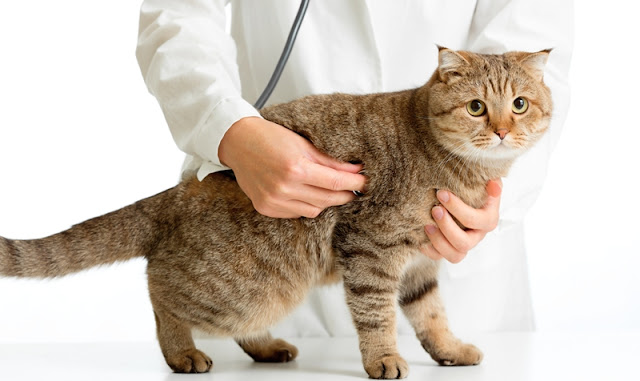Like all mammals, cats have 2 kidneys, one on the left, and one on the right-- shaped like kidney beans, of course. Blood flows into the kidney through the kidney artery and leaves via the kidney vein. As blood travels through the kidney, toxic substances are filtered from the bloodstream. These toxins enter into the urine, where they are excreted from the body. The kidney also produces hormones. One of these hormones, called erythropoietin, is accountable for the production of red cell from the bone marrow. Other hormones produced by the kidneys assist manage blood pressure.
Advance kidney illness
As most felines age, kidney function gradually decreases. Eventually, a point is reached where the kidneys can no longer keep their typical function, and the toxic substances in the bloodstream collect.The main clinical signs of CKD in cats are excessive thirst (polydipsia), extreme urination (polyuria), reduced cravings (anorexia), weight loss, and occasional throwing up.
This condition used to be called persistent kidney failure, however nowadays, vets choose the term chronic kidney condition. Unless the underlying cause can be found and treated, CKD invariably advances. Most of the times, an underlying cause can not be found. Why most felines eventually establish CKD continues to be one of veterinary medication's biggest (and most aggravating) mysteries.
Since clinical check in CKD are also often seen in other health problems, several tests are needed to verify a diagnosis. These include a complete blood count, serum chemistry panel, and urinalysis. The finding of dilute urine, combined with an elevated level of kidney contaminants in the blood, suggests that kidney function is jeopardized. The two main kidney toxic substances that we keep track of are blood urea nitrogen (typically shortened BUN) and creatinine. Other problems, such as raised phosphorus, low potassium, and anemia (reduced quantity of red blood cells) may also be discovered.
Although CKD is incurable, a variety of diet and drug interventions are now available that may slow the progression of the disorder, improve the cat's lifestyle, and extend a cat's survival time. Felines who are suitable candidates may be qualified for a kidney transplant. This is a significant endeavor requiring the competence of a skilled surgical team at a university or referral center. The treatment, as you may anticipate, is extremely costly, and post-operatively, the cat will need long-lasting administration of drugs to prevent rejection of the transplanted kidney.
Acute kidney injury
Although chronic kidney condition is by far the most frequently seen feline kidney disorder, other kidney conditions are occasionally come across in felines.Acute kidney failure (the presently preferred term is acute kidney injury, abbreviated AKI) is a disorder identified by an abrupt, dramatic reduction in kidney function. This is a serious condition that, if not recognized and resolved quickly, can lead to fast decline and possible death. Regrettably, the clinical signs of AKI-- bad hunger, vomiting, extreme sleepiness, weakness, decreased urine production-- are nonspecific and might result in delayed recognition that the cat is ill.
The most typical causes of AKI in cats are consumption of ethylene glycol (antifreeze) and ingestion of lilies. Many people are uninformed that all parts of the lily plant-- even the pollen-- are hazardous to cats if ingested. Other possible causes include unintended administration of hazardous drugs (for example, providing ibuprofen to a cat) and any scenario that results in reduced blood flow to the kidneys (for instance, anesthesia).
Pyelonephritis
Microbial infection of the kidney, called pyelonephritis, is sometimes seen in cats. In this condition, one or both kidneys end up being bigger and tender, and the cat usually develops a fever, high leukocyte count, and poor cravings. Elevated BUN and creatinine levels may happen if kidney function becomes damaged. Pyelonephritis usually requires hospitalization and treatment with intravenous fluids and prescription antibiotics.Kidney stones
Kidney stones (nephroliths) are uncommon in felines and are normally of very little medical consequence. However, if a small stone leaves the kidney and becomes lodged in the ureter (television that links the kidney to the bladder), the blockage of urine circulation causes a pressure accumulation in the kidney that can result in functional disability and, if not eased, ultimate destruction of the kidney. Fortunately, this is an uncommon incident.Feline contagious peritonitis
Feline transmittable peritonitis is a viral infection that might impact felines of all ages, although it has a predilection for young felines. There are 2 kinds of the infection: the "damp" form, where fluid accumulates in the abdominal area (and often the chest cavity) and the "dry" form, in which clusters of inflammatory cells penetrate numerous solid organs in the body. The liver and kidney are the preferred target organs for the FIP virus. When FIP impacts the kidneys, their function ultimately becomes impaired as the viral infection progresses.At present, there is no treatment for FIP, and all felines with the disease eventually succumb to it. Treatment of FIP, nevertheless, is a very active area of research, and veterinarians are more optimistic than ever that an effective treatment will quickly be discovered.




0 Response to "Get to Know About Kidney Function and Dysfunction in Cats"
Posting Komentar